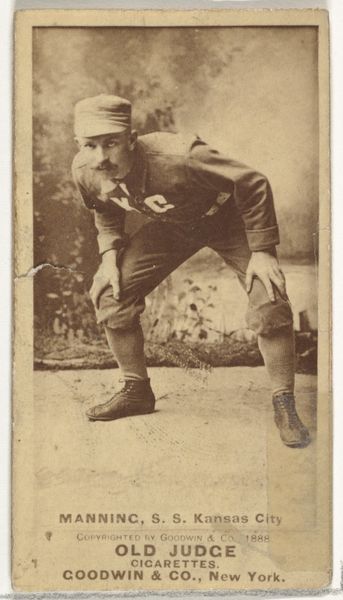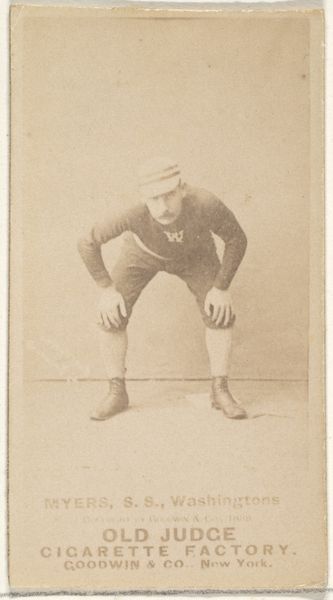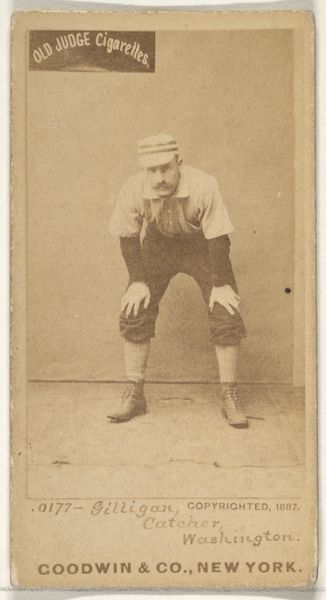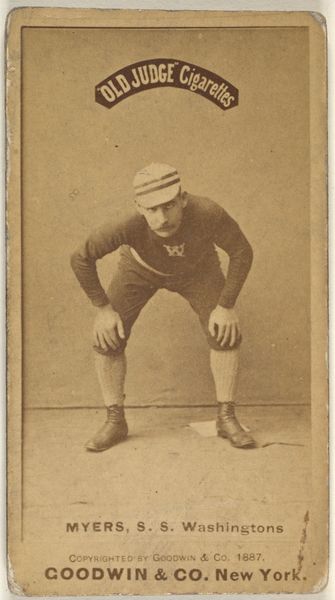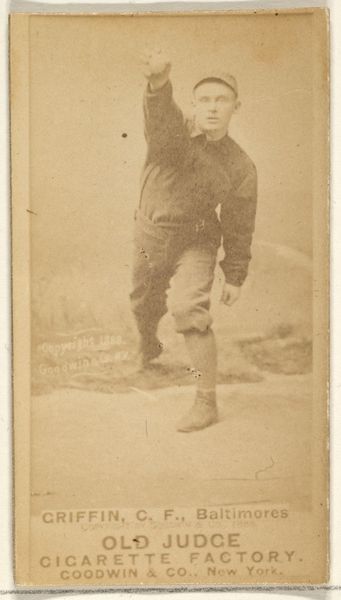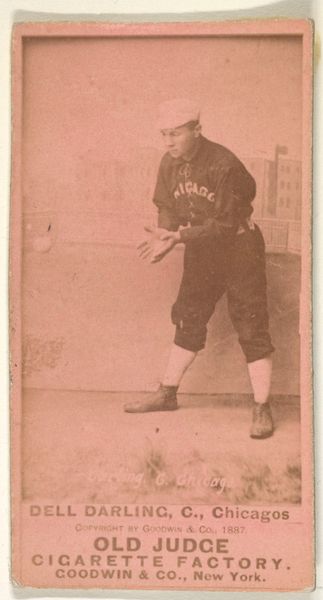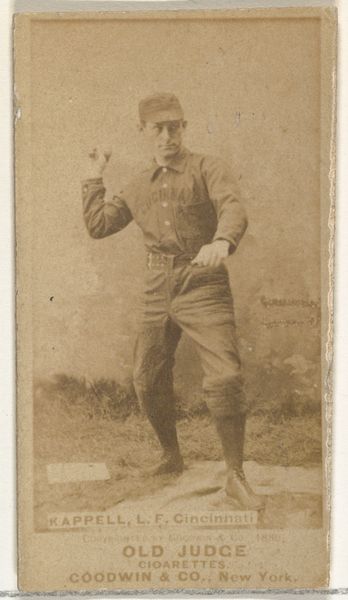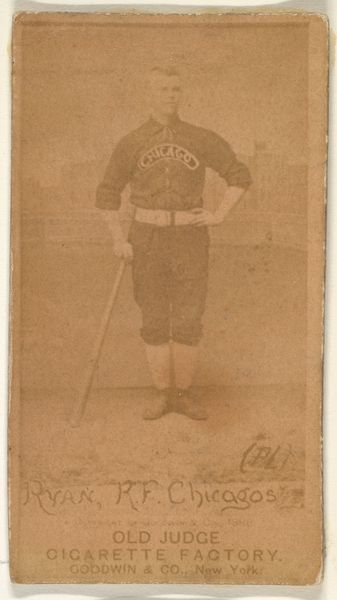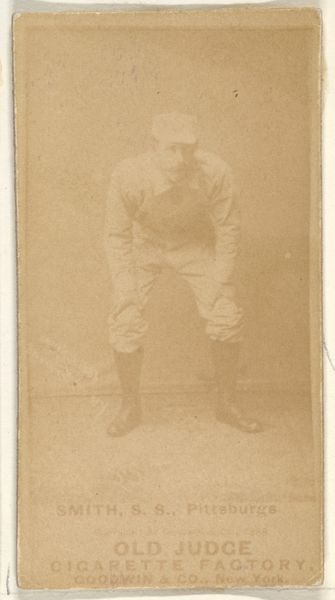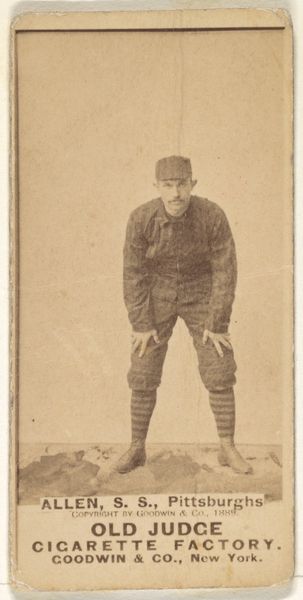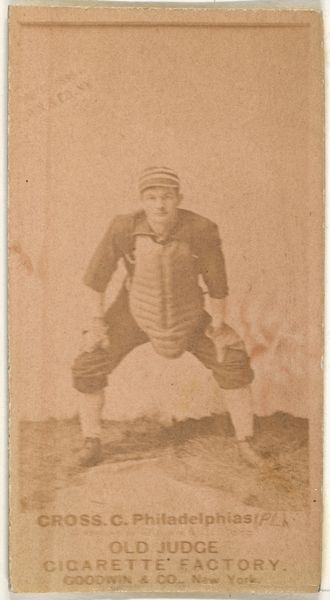
Daniel J. "Dan" Mahoney, Catcher, St. Joseph Clay Eaters, from the Old Judge series (N172) for Old Judge Cigarettes 1889
0:00
0:00
print, photography
#
portrait
# print
#
baseball
#
photography
#
genre-painting
#
athlete
Dimensions: sheet: 2 11/16 x 1 3/8 in. (6.9 x 3.5 cm)
Copyright: Public Domain
Curator: We’re looking at a baseball card, part of the Old Judge series produced by Goodwin & Company in 1889. It features Daniel J. "Dan" Mahoney, a catcher for the St. Joseph Clay Eaters. Editor: Immediately, I’m struck by the sepia tones, that feeling of a world preserved in amber. There’s a posed vulnerability in Mahoney’s stance that feels at odds with the idea of a strong athlete. Curator: Absolutely. Context is crucial here. These weren't just photos, they were marketing tools packaged with cigarettes. Consider the social and labor landscape of the late 19th century; baseball was becoming a professional sport, and working-class masculinity was heavily linked to notions of strength and athleticism. Editor: Yes, the photograph becomes a symbol in and of itself. His pose mirrors the stance of ancient gladiators; legs firmly planted. While he appears somewhat stiff and posed, he still manages to exude a sense of duty and grounded readiness for anything the world can throw at him. His cap could allude to this connection with men who served. Curator: And that brings up an important point about race and class within the context of early baseball. Though integrated initially, by the turn of the century, racial segregation became the norm. Cards like this mostly showcased white athletes, further marginalizing black players, which became a very important social issue to deal with. Editor: Looking closer, even the text on the card, “Old Judge Cigarette Factory,” creates this associative link between the image of the athlete, health and well-being on the one hand, and this unhealthy addiction on the other. The text could serve as a symbol for mortality. Curator: It speaks to the commodification of these athletes. But there are also narratives of perseverance and athleticism present, within this wider discussion around identity. The symbolism that exists within this card isn’t as straightforward. Editor: This single card gives us a peek into the past in several different lights; labor, identity and mortality, and of course, that nostalgic sense of a bygone era in the United States. Curator: Definitely. Hopefully this exploration will give all those that come across this artwork insight on issues about capitalism, masculinity and commodification.
Comments
No comments
Be the first to comment and join the conversation on the ultimate creative platform.
